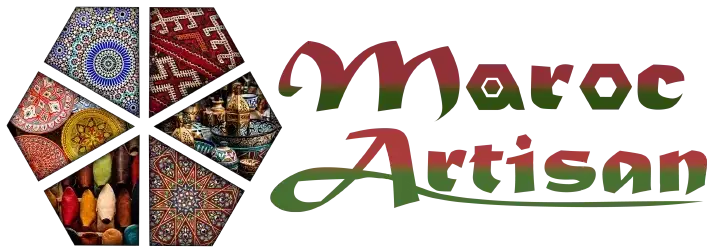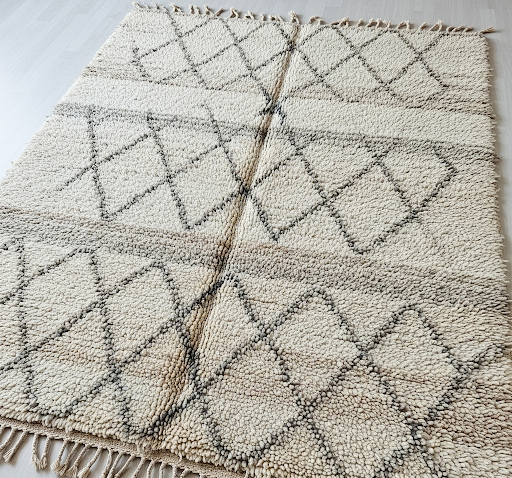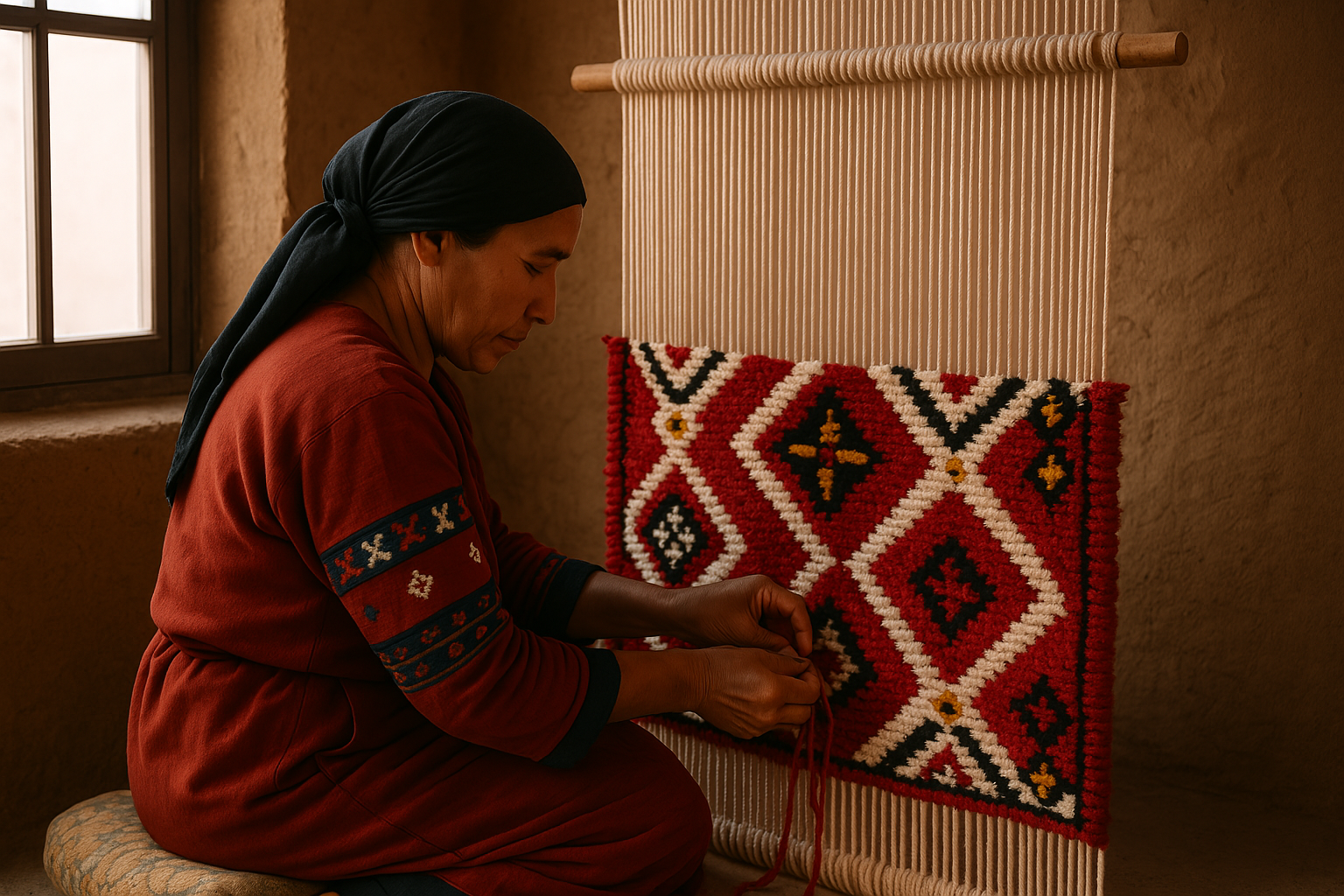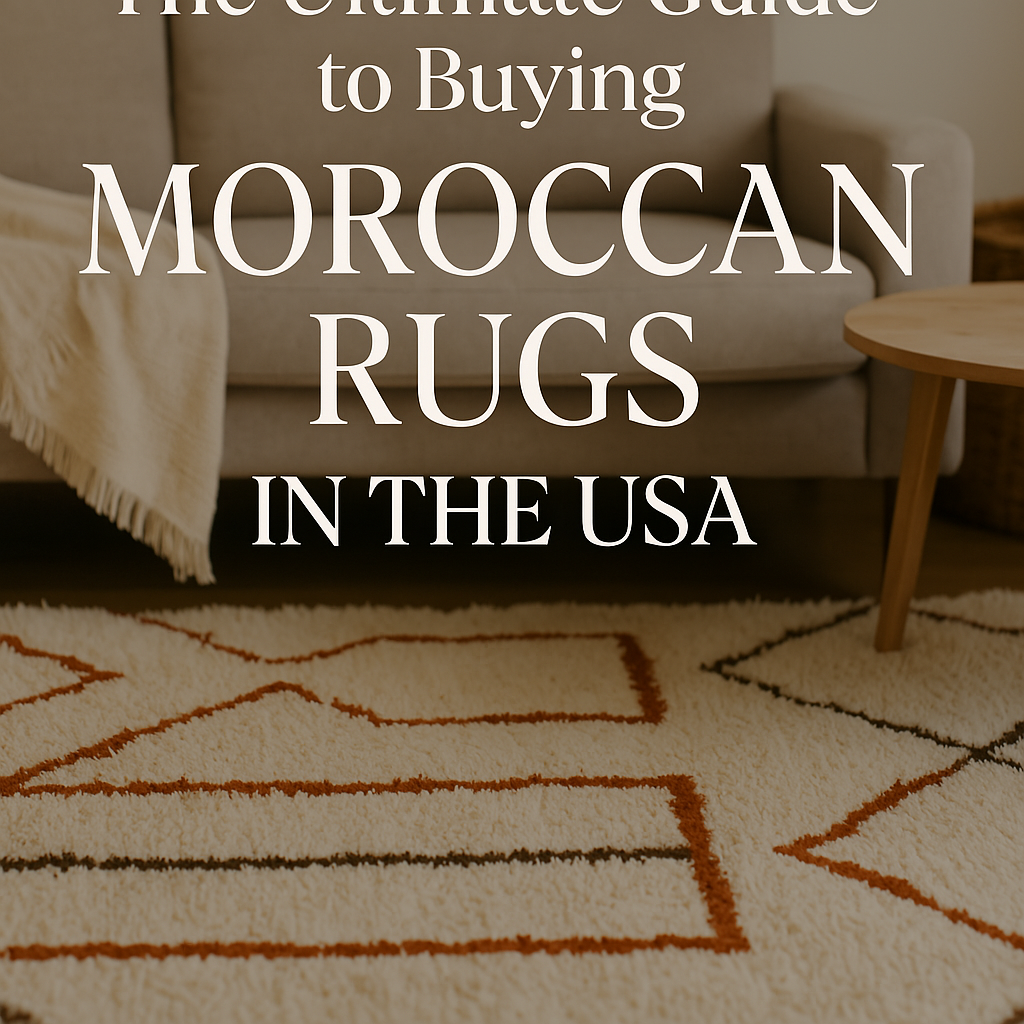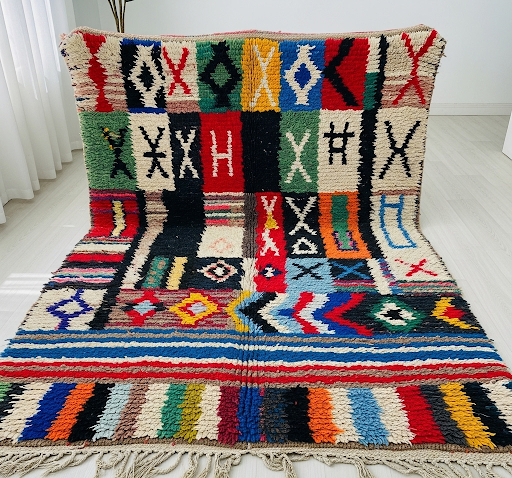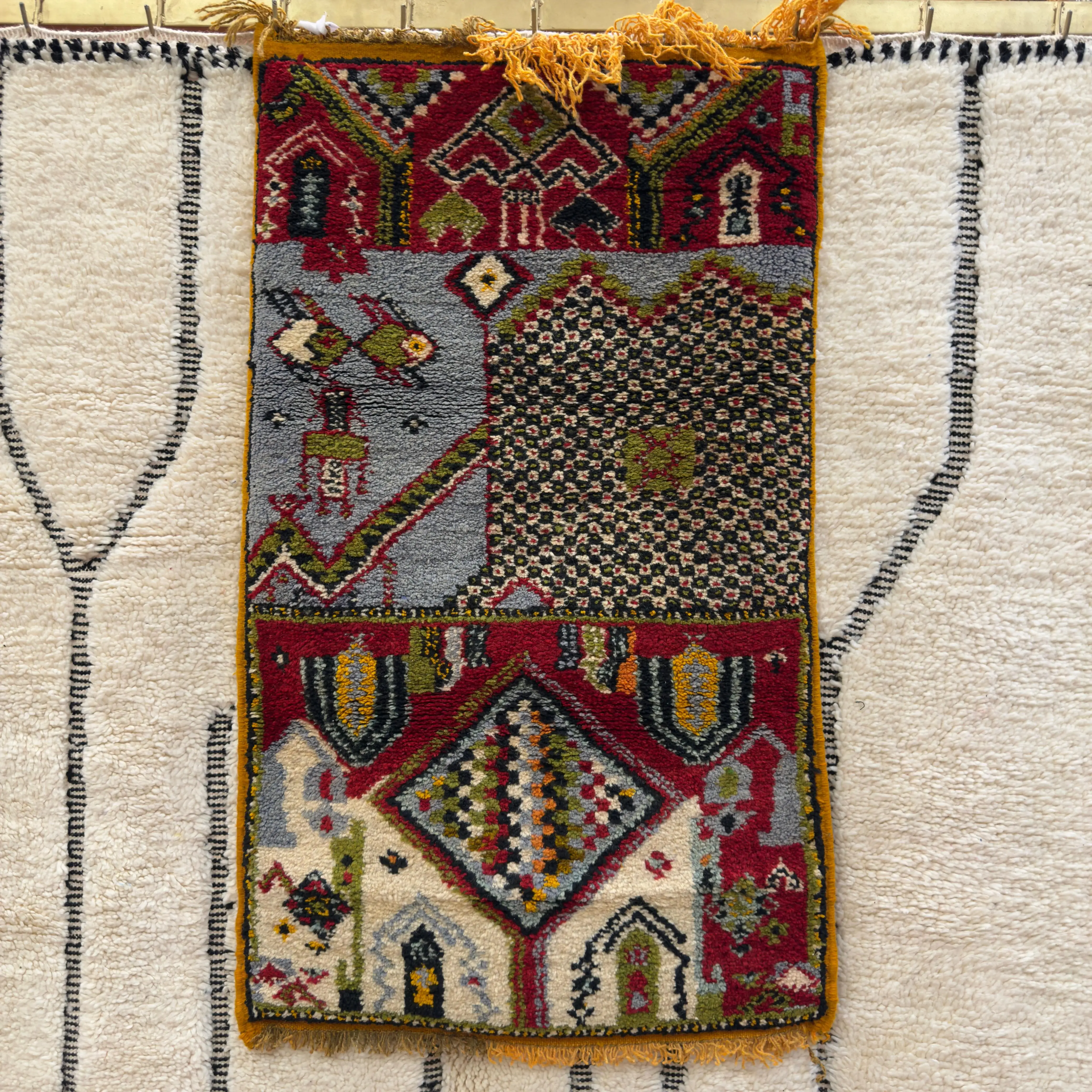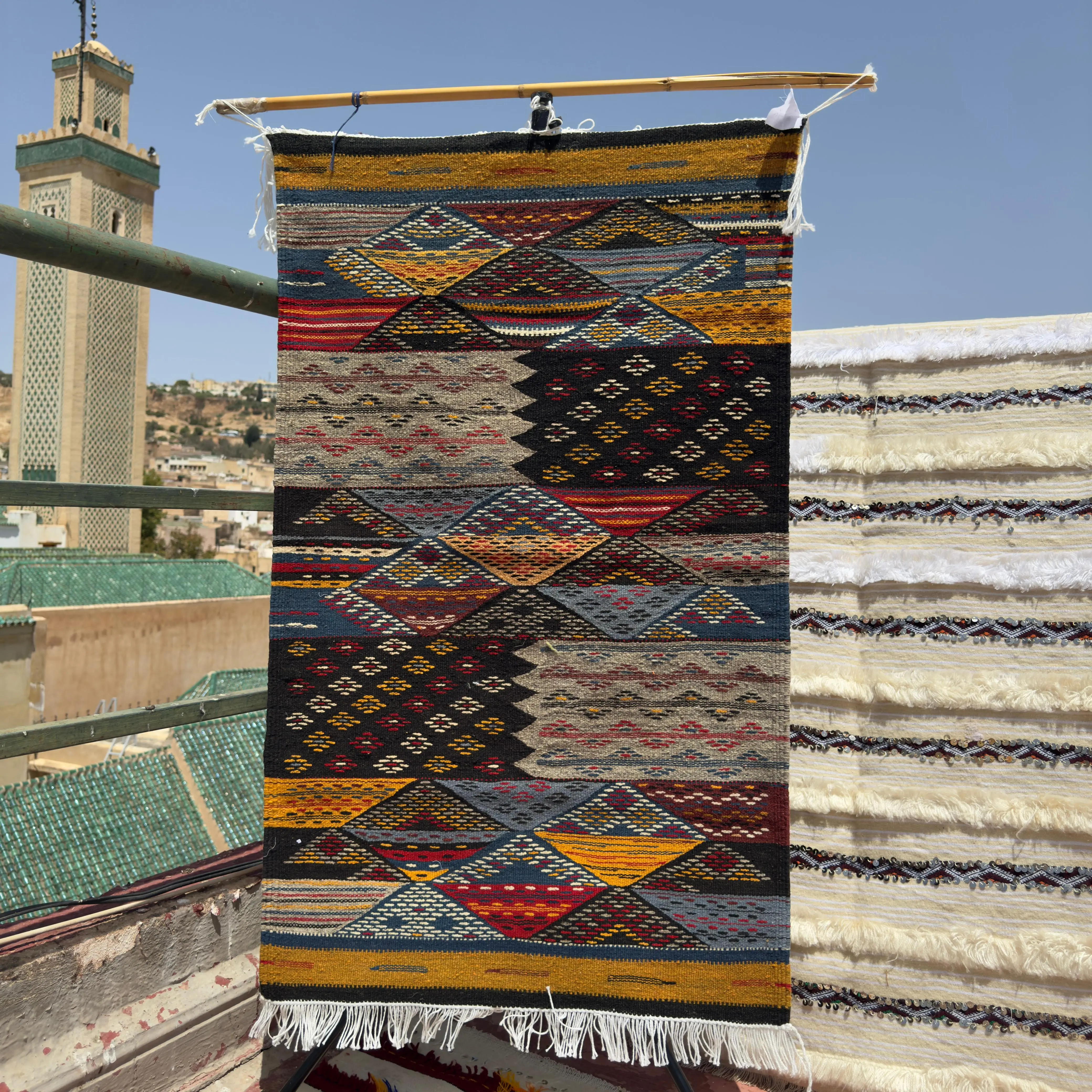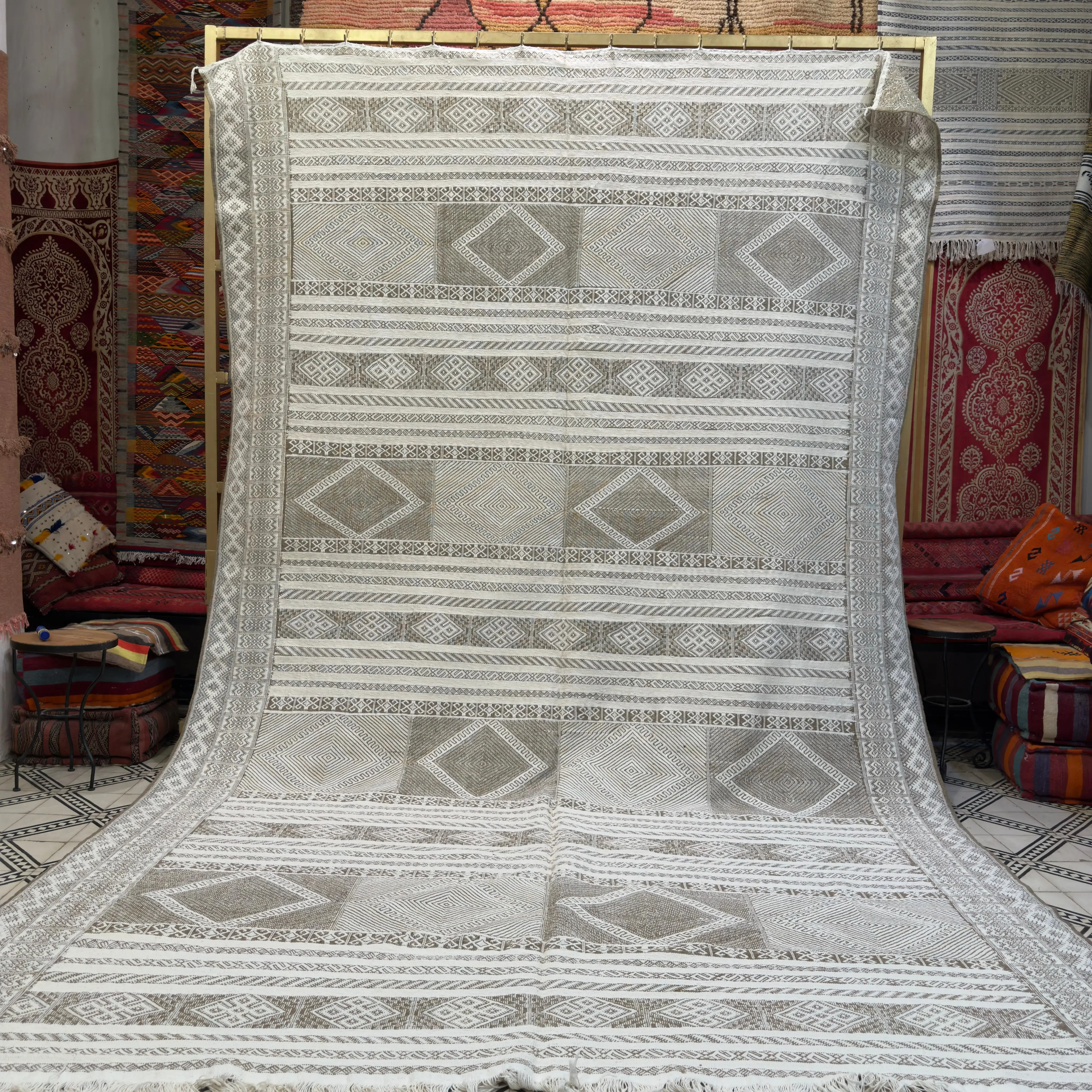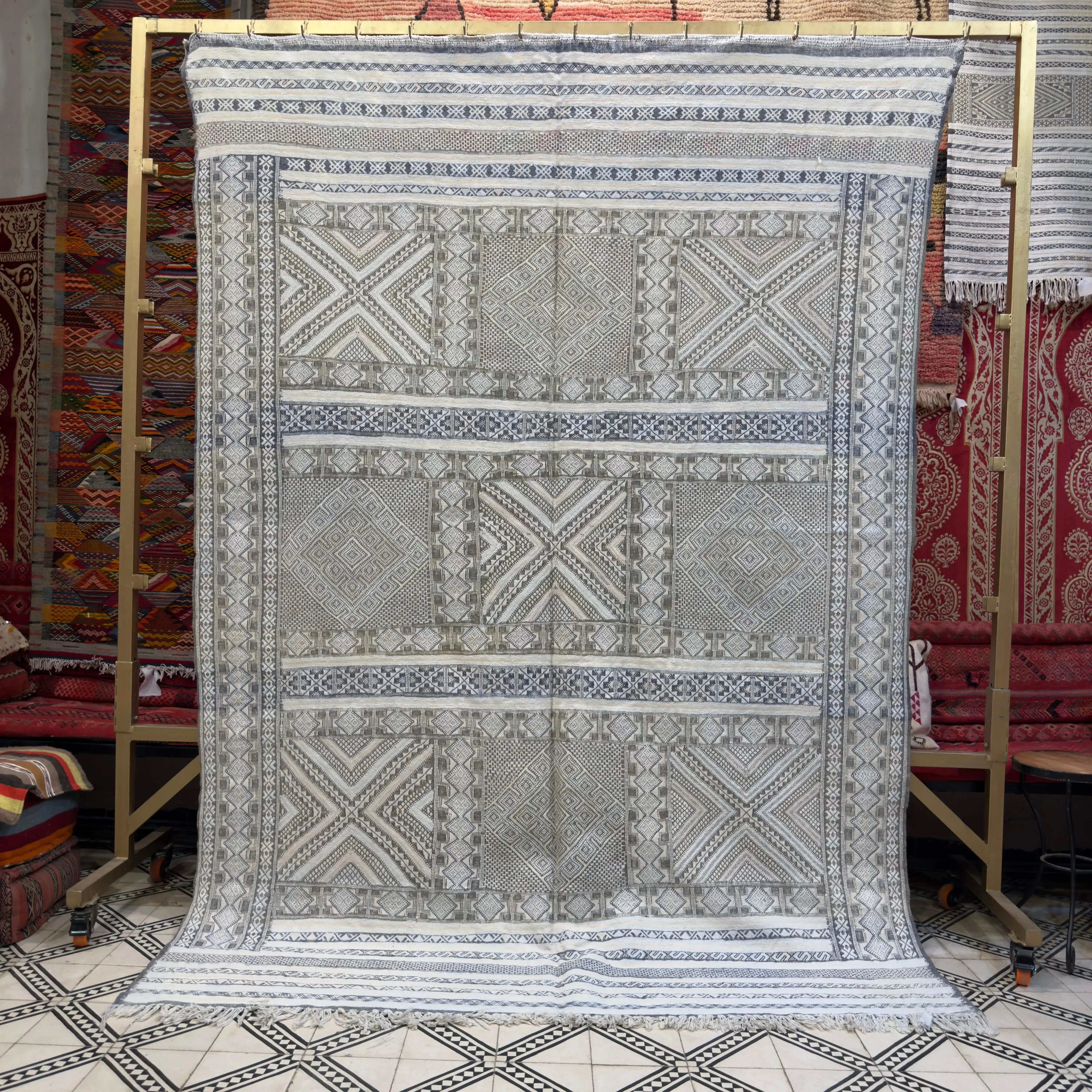In a world where we are increasingly aware of our environmental footprint and the impact of our purchases, every choice matters—right down to the rug on our floor. An area rug can be more than just a decorative element; it can be a reflection of your values. Choosing a sustainable and ethical rug means investing in a piece that is not only beautiful but also kind to the planet and the people who made it.
But what makes a rug "conscious"? This guide will walk you through the key materials, certifications, and questions to ask, empowering you to find a rug that you can feel truly good about.
Sustainable Materials: Weaving a Greener Future
The journey to a sustainable rug begins with its fibers. The best choices are those that are renewable, biodegradable, or recycled.
-
Natural & Renewable Fibers:
-
Wool: A powerhouse of sustainability. Wool is a rapidly renewable resource (sheep grow new coats every year!), incredibly durable, naturally flame-retardant, and biodegradable. High-quality large area rugs made of wool can last for generations, making them a long-term sustainable investment.
-
Jute and Sisal: These plant-based fibers are fast-growing, strong, and biodegradable. They bring a wonderful, earthy texture to a room and are often very affordable.
-
Organic Cotton: While conventional cotton can be resource-intensive, organic cotton is grown without harmful pesticides and with more sustainable water management practices.
-
Recycled Materials:
-
Recycled PET: These innovative rugs are made from recycled plastic bottles. They are surprisingly soft, incredibly durable, and stain-resistant, making them perfect for high-traffic areas. Best of all, they divert plastic waste from our landfills and oceans.
-
Natural Dyes: Look for rugs colored with natural vegetable and mineral dyes. These avoid the harsh chemicals and pollutants associated with many synthetic dyes, making them safer for your home and the environment. A rug colored with natural indigo or madder root is, in essence, a true green area rug.

Ethical Production: Honoring the Hands That Create
A truly conscious choice also considers the human element. The rug industry, particularly for handmade pieces, relies on the skill of artisans around the world. Ensuring they are treated fairly is paramount.
-
Look for Fair Trade Certifications: The most important thing to look for is a certification label from an organization like GoodWeave. The GoodWeave label is an assurance that no child, forced, or bonded labor was used in the making of a rug. It also means that a percentage of the rug's price goes back to support educational programs in weaving communities.
-
Support Artisan Co-ops: Many brands work directly with artisan cooperatives, ensuring that the weavers receive fair wages, work in safe conditions, and have a direct hand in their economic future. Research the brand to see if they are transparent about their supply chain.
Practical Tips for Conscious Rug Shopping
-
Think Vintage: The most sustainable product is the one that already exists. Buying a vintage rug is the ultimate form of recycling. It requires no new resources to produce and saves a beautiful, handcrafted item from the landfill.
-
Invest in Quality: A cheap, low-quality rug will need to be replaced in just a few years, adding to landfill waste. Investing in high-quality, large area rugs made from durable materials means you'll have a piece that lasts for decades, which is far more sustainable in the long run.
-
Ask Questions: Don't be shy. Ask the retailer about the rug's origin, the materials used, how it was dyed, and if it has any certifications. A transparent company will be happy to share this information.
The "Green Area Rug": More Than a Color
While a literal green area rug can bring a sense of nature and calm into your home, the term has a deeper meaning for the conscious consumer. Any rug chosen with care for the planet and its people—be it a neutral wool rug, a colorful recycled PET rug, or a vintage Persian rug—is a "green" choice. It's about a mindset, not a color palette.
Conclusion: A Purchase with Purpose
Choosing a sustainable and ethical area rug is an investment in a healthier home, a healthier planet, and a fairer world. It transforms a simple decorative decision into a purchase with purpose. By prioritizing natural or recycled materials and fair labor practices, you can find a beautiful, one-of-a-kind piece that not only anchors your room but also aligns with your values.
Dans un monde où nous sommes de plus en plus conscients de notre empreinte écologique et de l'impact de nos achats, chaque choix compte, jusqu'au tapis sur notre sol. Un tapis peut être plus qu'un simple élément décoratif ; il peut être le reflet de vos valeurs. Choisir un tapis durable et éthique signifie investir dans une pièce qui est non seulement belle, mais aussi respectueuse de la planète et des personnes qui l'ont fabriquée.
Mais qu'est-ce qui rend un tapis « conscient » ? Ce guide vous présentera les matériaux clés, les certifications et les questions à poser, vous donnant le pouvoir de trouver un tapis dont vous pourrez vous sentir vraiment fier.
Matériaux durables : Tisser un avenir plus vert
Le voyage vers un tapis durable commence par ses fibres. Les meilleurs choix sont ceux qui sont renouvelables, biodégradables ou recyclés.
-
Fibres naturelles et renouvelables :
-
Laine : Une force de la durabilité. La laine est une ressource rapidement renouvelable (les moutons se refont une toison chaque année !), incroyablement durable, naturellement ignifuge et biodégradable. Les grands tapis de haute qualité en laine peuvent durer des générations, ce qui en fait un investissement durable à long terme.
-
Jute et Sisal : Ces fibres végétales poussent rapidement, sont solides et biodégradables. Elles apportent une merveilleuse texture terreuse à une pièce et sont souvent très abordables.
-
Coton biologique : Alors que le coton conventionnel peut être gourmand en ressources, le coton biologique est cultivé sans pesticides nocifs et avec des pratiques de gestion de l'eau plus durables.
-
Matériaux recyclés :
-
PET recyclé : Ces tapis innovants sont fabriqués à partir de bouteilles en plastique recyclées. Ils sont étonnamment doux, incroyablement durables et résistants aux taches, ce qui les rend parfaits pour les zones à fort trafic. Mieux encore, ils détournent les déchets plastiques de nos décharges et de nos océans.
-
Teintures naturelles : Recherchez des tapis colorés avec des teintures végétales et minérales naturelles. Celles-ci évitent les produits chimiques agressifs et les polluants associés à de nombreuses teintures synthétiques, les rendant plus sûres pour votre maison et l'environnement. Un tapis coloré à l'indigo naturel ou à la racine de garance est, par essence, un véritable tapis vert.

Production éthique : Honorer les mains qui créent
Un choix vraiment conscient prend également en compte l'élément humain. L'industrie du tapis, en particulier pour les pièces faites à la main, repose sur le savoir-faire d'artisans du monde entier. S'assurer qu'ils sont traités équitablement est primordial.
-
Recherchez les certifications de commerce équitable : La chose la plus importante à rechercher est une étiquette de certification d'une organisation comme GoodWeave. Le label GoodWeave est l'assurance qu'aucun travail d'enfant, forcé ou sous contrainte n'a été utilisé dans la fabrication d'un tapis. Cela signifie également qu'un pourcentage du prix du tapis est reversé pour soutenir des programmes éducatifs dans les communautés de tisserands.
-
Soutenez les coopératives d'artisans : De nombreuses marques travaillent directement avec des coopératives d'artisans, garantissant que les tisserands reçoivent des salaires équitables, travaillent dans des conditions sûres et ont une part directe dans leur avenir économique. Renseignez-vous sur la marque pour voir si elle est transparente sur sa chaîne d'approvisionnement.
Conseils pratiques pour un achat de tapis conscient
-
Pensez vintage : Le produit le plus durable est celui qui existe déjà. Acheter un tapis vintage est la forme ultime de recyclage. Il ne nécessite aucune nouvelle ressource pour sa production et sauve un bel objet artisanal de la décharge.
-
Investissez dans la qualité : Un tapis bon marché et de mauvaise qualité devra être remplacé en quelques années seulement, ce qui augmentera les déchets mis en décharge. Investir dans de grands tapis de haute qualité fabriqués à partir de matériaux durables signifie que vous aurez une pièce qui durera des décennies, ce qui est beaucoup plus durable à long terme.
-
Posez des questions : Ne soyez pas timide. Interrogez le détaillant sur l'origine du tapis, les matériaux utilisés, la manière dont il a été teint et s'il possède des certifications. Une entreprise transparente se fera un plaisir de partager ces informations.
Le « tapis vert » : Plus qu'une couleur
Alors qu'un tapis vert au sens littéral peut apporter une sensation de nature et de calme dans votre maison, le terme a une signification plus profonde pour le consommateur conscient. Tout tapis choisi avec soin pour la planète et ses habitants — que ce soit un tapis en laine neutre, un tapis coloré en PET recyclé ou un tapis persan vintage — est un choix « vert ». C'est une question d'état d'esprit, pas de palette de couleurs.
Conclusion : Un achat qui a du sens
Choisir un tapis durable et éthique est un investissement dans une maison plus saine, une planète plus saine et un monde plus juste. Cela transforme une simple décision décorative en un achat qui a du sens. En donnant la priorité aux matériaux naturels ou recyclés et aux pratiques de travail équitables, vous pouvez trouver une belle pièce unique qui non seulement ancre votre pièce, mais qui correspond également à vos valeurs.
En un mundo en el que somos cada vez más conscientes de nuestra huella ecológica y del impacto de nuestras compras, cada elección cuenta, hasta la alfombra de nuestro suelo. Una alfombra puede ser más que un simple elemento decorativo; puede ser un reflejo de tus valores. Elegir una alfombra sostenible y ética significa invertir en una pieza que no solo es hermosa, sino también respetuosa con el planeta y con las personas que la fabricaron.
Pero, ¿qué hace que una alfombra sea "consciente"? Esta guía te explicará los materiales clave, las certificaciones y las preguntas que debes hacer, dándote el poder de encontrar una alfombra con la que puedas sentirte realmente bien.
Materiales sostenibles: Tejiendo un futuro más verde
El viaje hacia una alfombra sostenible comienza con sus fibras. Las mejores opciones son aquellas que son renovables, biodegradables o recicladas.
-
Fibras naturales y renovables:
-
Lana: Una potencia de la sostenibilidad. La lana es un recurso rápidamente renovable (¡las ovejas renuevan su lana cada año!), increíblemente duradera, naturalmente ignífuga y biodegradable. Las grandes alfombras de lana de alta calidad pueden durar generaciones, lo que las convierte en una inversión sostenible a largo plazo.
-
Yute y Sisal: Estas fibras vegetales crecen rápidamente, son fuertes y biodegradables. Aportan una maravillosa textura terrenal a una habitación y suelen ser muy asequibles.
-
Algodón orgánico: Mientras que el algodón convencional puede consumir muchos recursos, el algodón orgánico se cultiva sin pesticidas dañinos y con prácticas de gestión del agua más sostenibles.
-
Materiales reciclados:
-
PET reciclado: Estas innovadoras alfombras están hechas de botellas de plástico recicladas. Son sorprendentemente suaves, increíblemente duraderas y resistentes a las manchas, lo que las hace perfectas para zonas de mucho tráfico. Lo mejor de todo es que desvían los residuos plásticos de nuestros vertederos y océanos.
-
Tintes naturales: Busca alfombras teñidas con tintes vegetales y minerales naturales. Estos evitan los productos químicos agresivos y los contaminantes asociados a muchos tintes sintéticos, lo que los hace más seguros para tu hogar y el medio ambiente. Una alfombra teñida con índigo natural o raíz de rubia es, en esencia, una verdadera alfombra verde.

Producción ética: Honrando las manos que crean
Una elección verdaderamente consciente también tiene en cuenta el elemento humano. La industria de las alfombras, especialmente en el caso de las piezas hechas a mano, depende de la habilidad de artesanos de todo el mundo. Asegurarse de que sean tratados con justicia es primordial.
-
Busca certificaciones de comercio justo: Lo más importante que hay que buscar es una etiqueta de certificación de una organización como GoodWeave. La etiqueta GoodWeave es una garantía de que no se utilizó trabajo infantil, forzado o en condiciones de servidumbre en la fabricación de una alfombra. También significa que un porcentaje del precio de la alfombra se destina a apoyar programas educativos en las comunidades de tejedores.
-
Apoya a las cooperativas de artesanos: Muchas marcas trabajan directamente con cooperativas de artesanos, garantizando que los tejedores reciban salarios justos, trabajen en condiciones seguras y tengan una participación directa en su futuro económico. Investiga la marca para ver si es transparente sobre su cadena de suministro.
Consejos prácticos para una compra de alfombras consciente
-
Piensa en lo vintage: El producto más sostenible es el que ya existe. Comprar una alfombra vintage es la forma definitiva de reciclaje. No requiere nuevos recursos para su producción y salva un hermoso artículo artesanal del vertedero.
-
Invierte en calidad: Una alfombra barata y de baja calidad tendrá que ser reemplazada en pocos años, lo que aumentará los residuos en los vertederos. Invertir en grandes alfombras de alta calidad hechas con materiales duraderos significa que tendrás una pieza que durará décadas, lo que es mucho más sostenible a largo plazo.
-
Haz preguntas: No seas tímido. Pregunta al vendedor sobre el origen de la alfombra, los materiales utilizados, cómo fue teñida y si tiene alguna certificación. Una empresa transparente estará encantada de compartir esta información.
La "alfombra verde": Más que un color
Mientras que una alfombra verde literal puede aportar una sensación de naturaleza y calma a tu hogar, el término tiene un significado más profundo para el consumidor consciente. Cualquier alfombra elegida con cuidado por el planeta y su gente —ya sea una alfombra de lana neutra, una colorida alfombra de PET reciclado o una alfombra persa vintage— es una elección "verde". Es una cuestión de mentalidad, no de una paleta de colores.
Conclusión: Una compra con propósito
Elegir una alfombra sostenible y ética es una inversión en un hogar más saludable, un planeta más sano y un mundo más justo. Transforma una simple decisión decorativa en una compra con propósito. Al dar prioridad a los materiales naturales o reciclados y a las prácticas laborales justas, puedes encontrar una hermosa pieza única que no solo ancle tu habitación, sino que también se alinee con tus valores.
